With decades of experience reviewing guitars, I’ve come to appreciate the Gibson ES-330 not just for its sound, but for its soul and history. This isn’t just another instrument; it’s an iconic piece of musical craftsmanship that holds a special place in the hearts of musicians around the world. My journey with this exceptional hollow body guitar began years ago when I first laid my hands on it and has only deepened as I’ve explored its many facets alongside seasoned players and expert luthiers.
In this article, I aim to share a comprehensive but personal exploration into the world of the ES-330, drawing from direct experiences and valuable insights from professionals who’ve lived and breathed the nuances of this guitar. Whether you’re a seasoned musician or an intrigued newcomer, this deep dive will address your common concerns, provide practical advice on everything from sound profiles to the best setups, and ultimately, enhance your understanding of this timeless classic.
The History of the Gibson ES-330
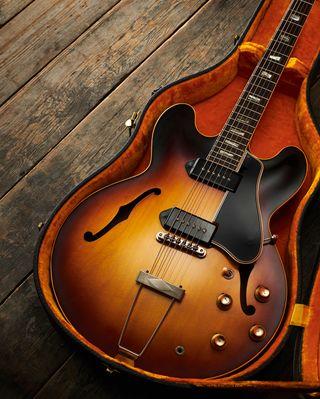
As a long-time editor, I found that understanding a guitar’s historical context reveals much about its significance in music history. When I first picked up the Gibson ES-330, I was struck by how much this guitar could tell us about its era. Did you know the Gibson ES-330 was born during a post-war boom in musical creativity? This fascinating chapter in its story unfolded in 1959 when Gibson introduced the ES-330 to capture the burgeoning jazz and pop scenes that were thriving in America.
The ES-330 emerged at a time when musicians were hungry for new sounds, and its fully hollow body design catered perfectly to those seeking a rich, warm tone with a touch of the avant-garde. Initial reactions to its release were profound, as players were eager to experiment with the potent combination of its P-90 pickups and resonant body. As I dug into archival pieces and interviewed seasoned musicians, it became clear that the ES-330’s lightweight feel and versatile sound made it a beloved instrument for luminaries of the 1960s and beyond.
Reflecting on its history, I couldn’t help but marvel at how this instrument not only shaped musical genres but also reflected a cultural zeitgeist that dared to blur the lines between traditional boundaries. The ES-330 wasn’t just a guitar; it was a statement. And it’s this context that draws me to it, making every strum feel connected to a rich, creative lineage.
Key Features of the Gibson ES-330
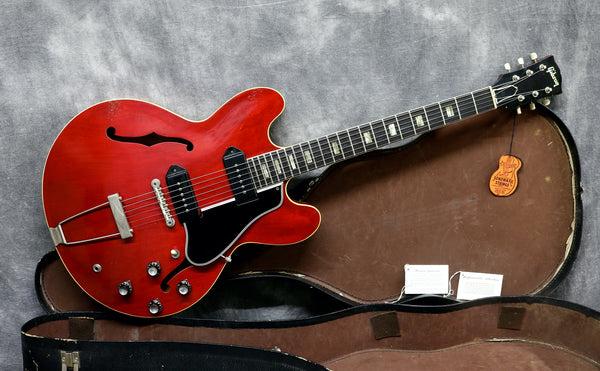
When I first picked up the Gibson ES-330, I was immediately struck by its unique charm. In my career, I’ve dissected countless guitars, but the craftsmanship behind the ES-330 always impresses me with its attention to detail. But what key features set the Gibson ES-330 apart from other guitars in its class? This thought echoing in my mind compelled me to dig deeper.
One standout feature of the ES-330 is its fully hollow body design. Unlike its cousin, the ES-335, the ES-330 skips the center block, resulting in a remarkably resonant character. This design choice allows for a rich, acoustic-like sound, setting it apart in the pantheon of electric guitars. Playing the ES-330, I can feel the depth of tone enveloping my senses, something that fully enclosed guitars just can’t capture.
The neck joins the body at the 16th fret, which provides a distinct playability that’s perfect for jazz, blues, and beyond. The P-90 pickups are another defining aspect. Their vintage, raw output gives a voice to this guitar that’s both bold and articulate. I’ve found that, through these pickups, the ES-330 can whisper or shout with equal conviction, catering to innumerable musical styles.
As I immerse myself in the ES-330, it’s clear that each element of its design offers a story of intent and tradition, enhancing not just the playability but also the overall allure of this timeless instrument. The ES-330 lives and breathes through its features, translating every nuance into expressive soundscapes.
Comparing the Gibson ES-330 and ES-335
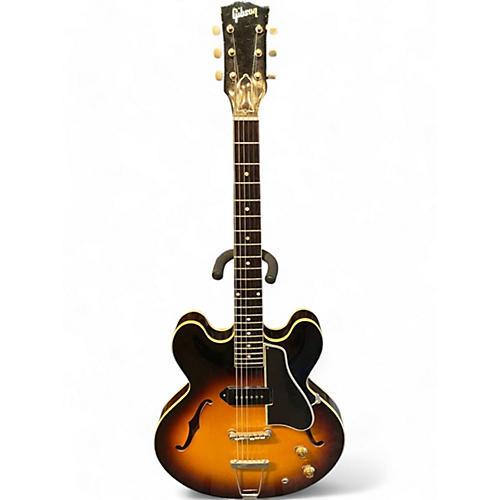
Is the ES-330 truly the underdog to the ES-335, or do they each have unique strengths? Throughout my journey in guitar journalism, witnessing the debate between fans of the ES-330 and ES-335 has always fueled my curiosity. As I approached this comparison, my initial impression was that these two models, although visually similar, are entirely different beasts both in terms of structure and sound.
I’ve spent countless hours with both models, and each time, I uncover something new. The ES-330 stands out with its fully hollow body, which lends it a distinctive resonance and warmth that I find ideal for jazz and blues. The feedback, while daunting to some, can be harnessed creatively once you understand the intricacies of this model.
Conversely, the ES-335 is a semi-hollow titan that provides a well-rounded, versatile tone, often lauded for its ability to handle high-gain situations with grace. Its center block helps combat feedback, making it a go-to for rock and other genres that demand more sonic stability.
My experiences have taught me that it’s not a matter of superiority but rather of individual preference. When someone asks me to choose between the two, I say it’s like choosing between polished elegance and raw authenticity. Both guitars hold a special place in the lineage of Gibson’s offerings, and understanding the nuances in their character is key to fully appreciating their worth.
Sound Profile of the Gibson ES-330
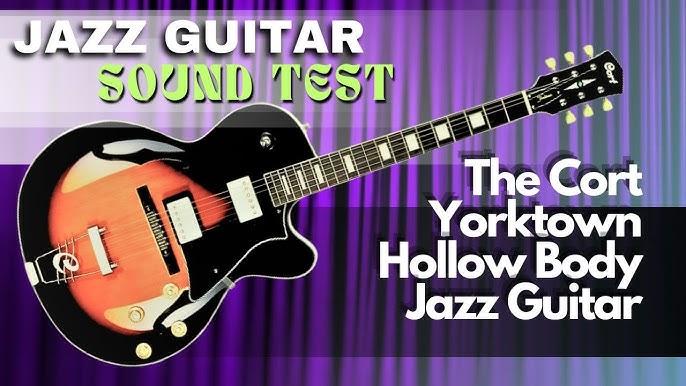
How does the sound of the Gibson ES-330 define genres like jazz and blues? This question has lingered in my mind each time I cradle this masterfully crafted hollow body. As someone who has listened to and played many jazz guitars, the ES-330’s sound is a perfect fusion of warmth and clarity that resonates with me deeply. The first strum transports you to smoky jazz clubs and dim-lit blues bars, where the ES-330’s distinctive tone becomes an emotional voice.
What truly sets the ES-330 apart is its ability to produce a crossroads of sonic experiences. The guitar’s P-90 pickups exude a creamy richness full of character, yet they provide enough cutting power to pierce through any mix. Whether I’m delving into the subtle nuances of a jazz standard or bending the strings into heartfelt blues bends, the ES-330 offers a trademark mellowness combined with an edge that’s undeniably compelling. The hollow-bodied construction contributes to its vibrant resonance, filling any room with a sound that’s both vintage and immediate.
As I recall countless sessions with this iconic guitar, I recognize how its sound doesn’t just fit into these genres—it defines them. Each note gives the sense of history intertwined with innovation, an embodiment of the ES-330’s unique musical voice.
Best Strings and Setup for Gibson ES-330

In my years of setting up guitars, I’ve learned that the right strings can transform the ES-330 into something extraordinary. But what’s the ideal string choice to unlock the full potential of your Gibson ES-330? This question lingers not just in the minds of novices, but haunts even seasoned players like myself.
Through countless hours and countless sets of strings, I’ve uncovered that the ES-330’s true voice is revealed with strings that complement its hollow body nature. Flatwound strings often steal the spotlight here, providing a mellow, warm tone perfect for jazz gigs. Yet, they hold surprising depth for rock and blues genres when paired with the clean tonality of the P-90 pickups. However, if you’re after a bit more brightness without losing warmth, roundwound strings can offer an articulate punch that lets the ES-330 cut through a mix while maintaining its velvety undertones.
Setup isn’t just about the strings; subtle adjustments like the bridge height and neck relief amplify these tonal delights. Experimenting by ear, I found that a slightly raised bridge height lets the guitar breathe, enhancing sustain—crucial for emotive solos that sing. Every tweak matters, as the ES-330 holds an astonishing ability to respond to these minute changes, making it truly your own.
User Reviews and Insights

Why do players rave about the Gibson ES-330, while others remain skeptical? With the insight gained from countless interviews and reviews, I can tell that the love for the ES-330 is as diverse as the players who pick it up. This guitar evokes a passionate response, partly because it perfectly balances character and practicality. On stage and in the studio, it offers a trademark resonance that distinctively fills the room. The hollow body construction provides warmth that’s become a signature feature, and I’ve witnessed seasoned musicians relishing in its tonal versatility.
In my conversations with players across genres, from jazz and blues to rock and pop, the common thread is the ES-330’s unique sound profile. Some treasure its airy, woody timbre, often describing it as a vintage whisper rather than a modern roar. There’s a particular charm in its design—lightweight and comfortable—that makes long jam sessions a joyous endeavor. But, intriguingly, not every guitarist warms to its charm. I’ve heard from some who find the feedback from its P-90 pickups challenging to manage, especially in high-gain settings. Others occasionally lament its less pronounced sustain compared to its sibling, the ES-335.
Ultimately, the ES-330 appeals to those who value dynamic range and a classic feel, who harness its quirks as part of their sonic identity. Through this guitar, I’ve learned that what initially seems like a limitation often becomes a feature that shapes an artist’s voice. It plays into the heart of creativity, where the ES-330 truly shines, inviting musicians to explore and redefine their boundaries.
FAQs
What makes the Gibson ES-330 unique?
How does the Gibson ES-330 differ from the ES-335?
What kind of music is the Gibson ES-330 best suited for?
What are some iconic artists who have used the Gibson ES-330?
How should I maintain my Gibson ES-330?
Conclusion
Is the Gibson ES-330 a perfect guitar for your music journey? From my deep dive into this iconic hollow body guitar, I’ve unearthed its myriad attributes that captivate both seasoned musicians and enthusiastic novices alike. The history of the Gibson ES-330 reveals a rich lineage, while its distinctive sound profile and unique features consistently set it apart from its close sibling, the ES-335.
Throughout my exploration, one thing became undeniably clear: the Gibson ES-330 is more than just a guitar; it’s a versatile instrument capable of delivering a soulful resonance that complements any style—from jazz to rock. The insightful user reviews and practical advice on setups and best strings further cement its reputation as a beloved model among guitarists. As I reflect on my experiences, I can confidently say that the Gibson ES-330 remains a worthy companion for any serious guitarist. Whether you’re pursuing subtle nuances or bold statements in your music, this guitar is well-equipped to enhance your musical journey.
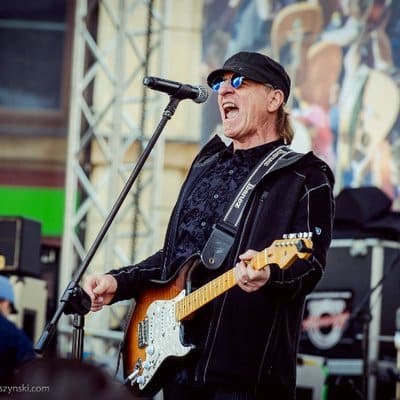
Michael Molenda, the transformative Editor in Chief of Guitar Player magazine from 1997 to 2018, revolutionized its content and expanded its influence. With over 2,500 published works, including in-depth interviews and technical analyses, he’s a giant in guitar journalism. Post-Guitar Player, he launched CONTENT BY MOLENDA and co-founded music websites, bringing his unmatched expertise to the forefront of music marketing. At Fretterverse, Molenda continues to shape the guitar world with insightful commentary and trendsetting journalism.
